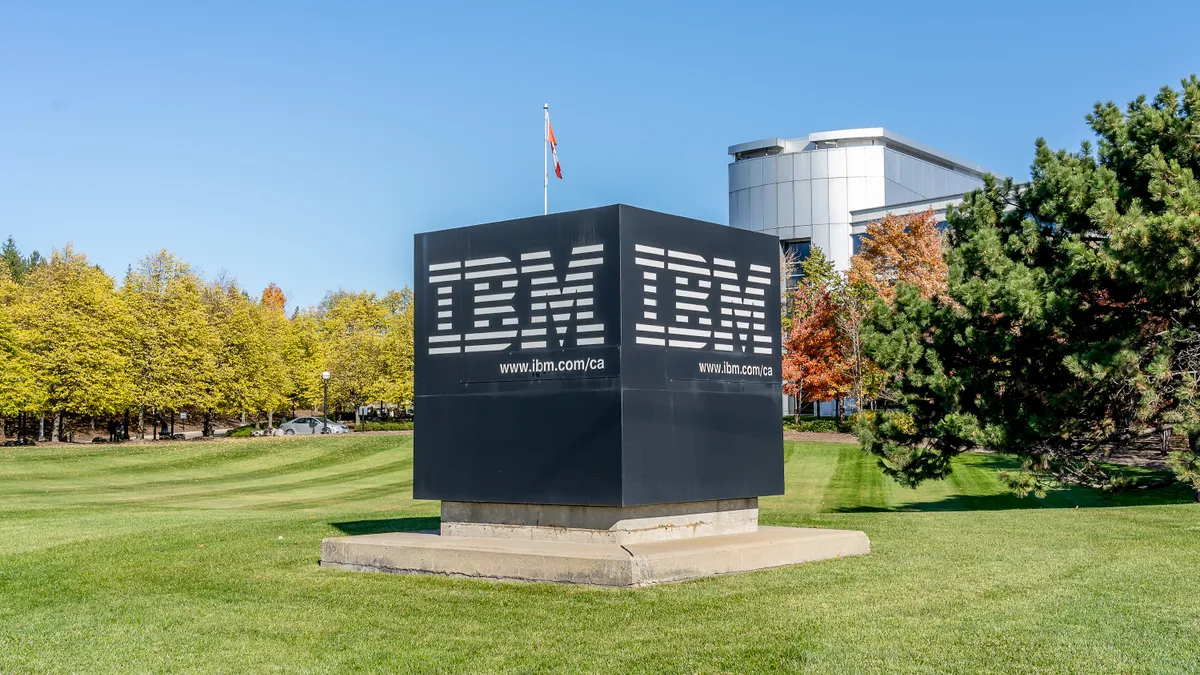United Airlines wasn’t thinking about software updates, threat detection or IT outages when it prioritized real-time data capabilities in its technology strategy. CIO Jason Birnbaum had customer experience enhancements and operational efficiencies top of mind.
“Our customers wanted and craved information," said Birnbaum. "We needed better ways to deliver it faster and with more accuracy in a language that they understood — not just airline jargon."
United was also focused on delivering real-time data to its own employees, both in times of normal operations and in weather-related crises. A flawed update from cybersecurity provider CrowdStrike that brought down millions of computers in the predawn hours of July 19 wasn’t on Birnbaum’s radar.
“We get disrupted all the time, whether it’s a hurricane or a snowstorm or whatever. We have to be ready to make decisions and recover quickly,” Birnbaum told CIO Dive. “We had invested in our recovery capabilities, reinforced by communication across different network groups. We all have the same data and we’re all looking at the same screen, so there were a lot of elements we were able to leverage in a very tough situation.”
CIOs put technologies and processes in place to keep the business running when problems arise. The CrowdStrike event was a painful reminder that it’s hard to prepare for the unpredictable.
Airlines were particularly hard hit. United had to ground nearly 700 flights on Friday, July 19, and more than 700 over the following two days, according to tracking service FlightAware. But, while Delta grounded more than 1,000 flights on Monday, July 22, and hundreds more the following day, United’s daily cancellations fell below 100.
The restoration took agility and an ability to mobilize quickly. Teams of technicians were dispatched to reboot more than 26,000 computers and endpoint devices at 365 airport locations, United CEO Scott Kirby detailed in an open letter just three days after the crisis began.
“We have an organization that supports the field, but we don't have people in every location,” Birnbaum said. “They got in their cars, they drove to places, some brought their kids along, and they did whatever they could to keep it going. There’s no official scorecard, but my reading of the situation is that we were one of the fastest in the industry to recover.”
From cloud to the edge
United’s modernization journey took flight in the cloud. IT led the company to an enterprisewide rethink of decision making and data sharing. The broader goal was to give customers more up-to-date information and help crews keep planes running on time.
The airline chose AWS as its preferred cloud vendor in 2021 and was nearing the end of a long migration in April, when CFO Mike Leskinen reported that between 70% and 90% of its workloads were in the cloud.
Less than 24 hours before the CrowdStrike outage began, during a July 18 earnings call, Kirby and Leskinen praised the company’s IT and operations teams for reducing the recovery time and costs of periodic disruptions.
As United upgraded technology and processes, Peter Weill, a senior research scientist at MIT Sloan School of Management and chairman at MIT CISR, was exploring the advantages of real-time businesses. Birnbaum attended a presentation by Weill and saw parallels that put United on the researcher’s radar.
“Jason stood up and said, ‘Wait, that's what we're trying to do at United,’” Weill said in an interview with CIO Dive.
Weill’s research focused on the user experience improvements Birnbaum had prioritized.
“When we did the research, it wasn't really about crisis or risk,” Weill said. “It focused on how you make customers and employees happier and more agile. They are much happier if they get an answer immediately, whether it's about a plane or a payment.”
While rooted in cloud, United’s improvements were tied into the edge technologies that gave teams access to real-time data and communications.
“We wanted to be better at turning our aircraft — fueling, fixing, catering and getting everybody boarded. There are roughly 250 different data points we want to measure in real time," Birnbaum said.
Last year, United was the first airline approved by the Federal Aviation Administration to deploy Apple's iPad Touch ID feature for digitizing maintenance documentation, a measure that helped prevent thousands of flight delays, Linda Jojo, the airline’s EVP and chief customer officer, told CIO Dive last October.
“We did invest — and pretty heavily — in mobile devices, because our employees don't sit behind desks,” Birnbaum said. “Our people need to be able to access data on the go.”
The trust element
Data modernization starts with technology, but success is measured by end-users through satisfaction and productivity gains.
“It's about trusting the data, trusting your people to make decisions and trusting your customers to use the data effectively,” said Weill.
CIOs also have to trust their teams enough to cede some degree of control, according to Weill. “If you don't change decision rights, you'll never be a real-time business,” he said. “The hardest thing by far, isn't the data, the system interfaces or the APIs — it's changing decision processes.”
For Birnbaum, loosening the reins wasn’t easy.
“So much of what you feel measured on as a CIO is being able to tell the CEO the status of everything,” Birnbaum said. “You end up spending a lot of time learning everything from everybody because of the fear of not knowing about something when you’re asked.”
Access to real-time data and to teams monitoring the results can be more powerful than tracking every minor development.
“In the nine years I've been here, we’ve had a lot of good ideas,” Birnbaum said. “But we used to have a really hard time executing them. We’ve now freed ourselves up to tackle some of these really good ideas — and you never know where they are going to be.”























